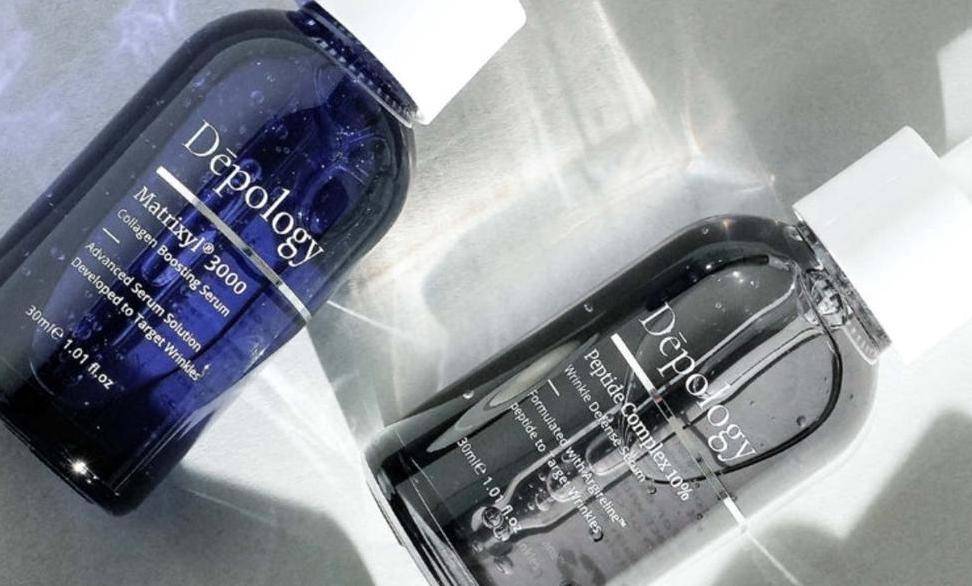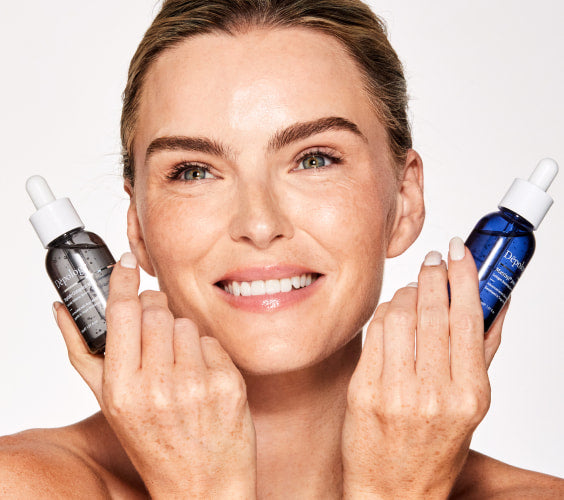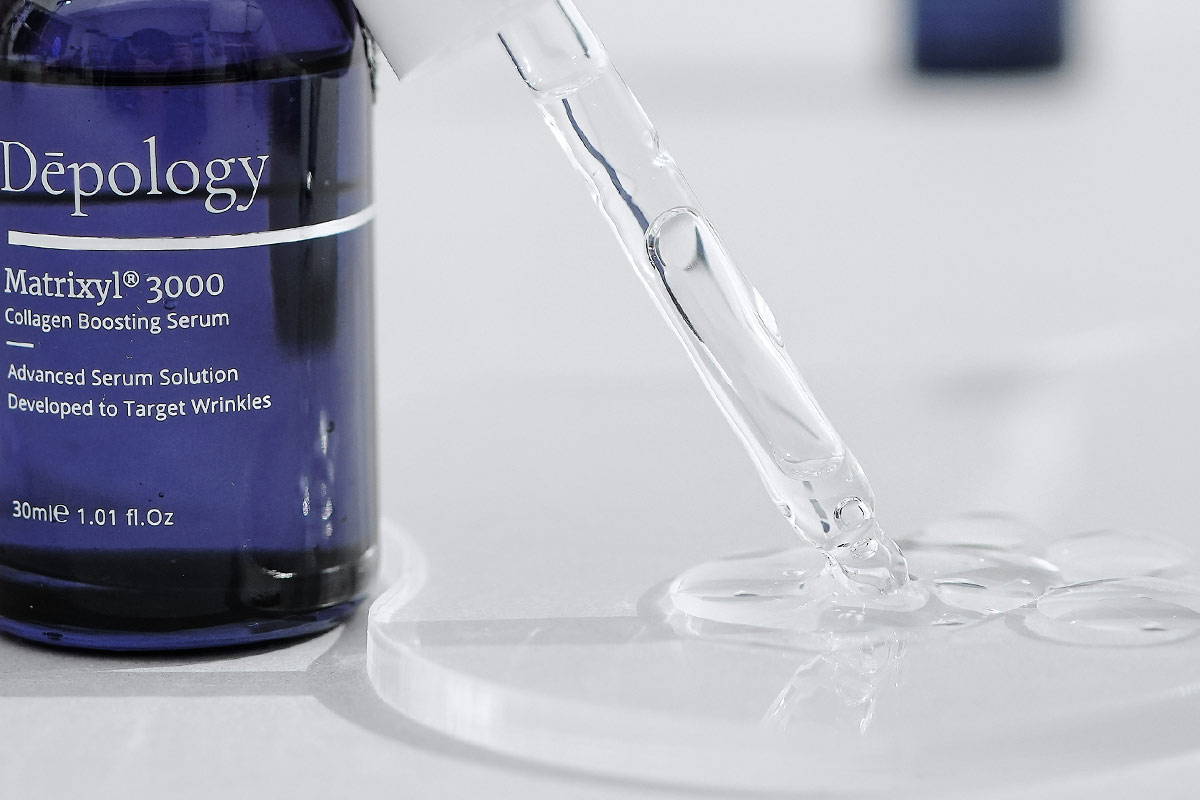
Peptide vs. Polypeptide: What's The Difference?
Knowing the differences between peptides and polypeptides is like knowing the difference between mozzarella and blue cheese— it's very important for you to get it right! Both ingredients form the foundation of many of the creams, lotions, and serums found in skincare routines. However, there are some differences between the two that allow them to work in different ways. To make sure your skin is being treated properly, understanding the science and distinguishing between peptides and polypeptides is essential.
What Is A Peptide?
A peptide is a chain composed of two or more amino acids. Different combinations of amino acids result in various types of peptides, each with its own chemical properties. Peptides have multiple functions in the body, including assisting in signaling the production of different nutrients, the formation of proteins, regulation of hormones, and the breakdown of toxins. Peptides are shorter than polypeptides (which we'll discuss in a bit) and behave differently on the skin when they are topically applied.
How Do Peptides Benefit The Skin?
When applied topically, peptides transfer messages to the skin that could trigger a variety of responses, such as increased collagen production, improved hydration levels, and the protection of the skin's natural barrier. Peptides may also help accelerate skin healing and reduce the appearance of wrinkles and uneven skin tone. As a result, peptides are a key ingredient in many moisturizers, serums, and skincare treatments. Peptides can also help our skin retain moisture, which is vital for overall skin health. With continued use, peptides show promise in retaining and restoring the skin's youthful glow.
Do Peptides Form Polypeptides?
"Poly" generally means "many." Therefore, a polypeptide is made up of many amino acids. Like peptides, polypeptides are composed of amino acids; however, the difference lies in the number of amino acids and the chain length. Specifically, a peptide usually contains between 2 and 50 amino acids, while a polypeptide contains 51 or more amino acids chained together. Smaller chains of amino acids (between 2 and 20) are further categorized as oligopeptides. Since polypeptides are longer than peptides, they also behave differently on the skin, which we will discuss below.
What Is The Difference Between Peptides And Polypeptides In Skincare?
When it comes to skincare, the difference between peptide and polypeptide can be summed up in two words: intensity and longevity. Peptides have a smaller chain length, which allows them to penetrate deeper into the skin and take effect faster than polypeptides. They are broken down quicker and will not remain on the skin for long. On the other hand, polypeptides have a longer chain length, affecting the skin more slowly and not going as deep, so they are not quite as effective.
What Is The Main Difference Between Polypeptide And Protein?
Polypeptides are a type of protein, but not all proteins are considered polypeptides. Proteins are even longer chains of amino acids that link together in unique ways in more complex shapes. Proteins are usually able to act independently and have diverse functions, whereas a polypeptide typically functions within a protein to form a larger structure.
Benefits Of Different Types Of Peptides
Depending on the chemical structure of the peptide, the benefits may vary. There are three main types of peptides depending on your skincare goals:
- Signal Peptides: Signal peptides, or messenger peptides, communicate with your cells to achieve a specific effect. They can signal the production of collagen and elastin, which firm and strengthen the skin. This can help reduce wrinkles and fine lines, improve skin texture, and restore radiance.
- Carrier Peptides: Carrier peptides, also known as transport peptides, help carry other ingredients like copper to enzymes in the skin to increase collagen and elastin and promote wound healing. They work by attaching the active ingredient to the peptide chain, allowing it to penetrate the skin more effectively.
- Neurotransmitter Peptides: Neurotransmitter peptides communicate with the skin's nerve cells to block specific signals and relax facial muscles. This can help prevent and reduce the appearance of wrinkles caused by repetitive facial movements like frowning and squinting.
Best Peptide Skincare Products
If you want to add peptides to your skincare routine, plenty of options are available. Common peptide-containing skincare products include anti-aging creams, serums, masks, cleansers, and toners. We've selected a few of our favorites that can help give your skin a boost and help reduce wrinkles, fine lines, and other skin concerns.
Dēpology Peptide Complex 10% Argireline™ Peptide Serum
Our favorite serum for preventing wrinkles and fine lines is the Dēpology Peptide Complex 10% Argireline™ Peptide Serum. This potent serum is formulated with 10% Argireline™, a neurotransmitter peptide that safely restricts subtle facial muscle movements that cause wrinkles when repeated over time. It also contains Vita-polypeptide, which combines Vitamin C and polypeptides to protect the skin from free radicals, and Vitamin E, another antioxidant that also keeps the skin hydrated.
Dēpology Matrixyl® 3000 Collagen Boosting Serum
Another anti-aging serum from Dēpology is the Matrixyl® 3000 Collagen Boosting Serum. It contains Matrixyl® 3000, a peptide complex formed by two signal peptides that work together to boost collagen production, firming and strengthening the skin. It also contains ultra-hydrating hyaluronic acid and glycerin to plump up the skin.
Additional Argireline™ And Matrixyl® 3000 Products
Dēpology offers several excellent options if you are looking to add Argireline™ or Matrixyl® 3000 to your skincare routine. The Peptide Complex Wrinkle Defense Eye Cream helps to smooth out the skin and prevent fine lines around the eyes with Argireline™. The Tri-Active Matrixyl® Complex Cream combines the Matrixyl® 3000, Matrixyl® SYNTHE’6®, and Matrixyl® Morphomics® peptide complexes to target various types of wrinkles while stimulating collagen production. The Pro-Firming Matrixyl® 3000 + Dynalift™ Night Mask incorporates Matrixyl® 3000 with Dynalift™, which is derived from sorghum juice and tightens sagging skin.
The Final Verdict
Whether you want to reduce wrinkles and fine lines or tighten sagging skin, peptides can give you the skin results you desire. Choosing the right product is the key to getting the most out of your skincare routine and achieving healthy, smooth skin. Understanding the differences between peptides and polypeptides and which types to look for in skincare products is the first step toward achieving healthy, beautiful skin.













